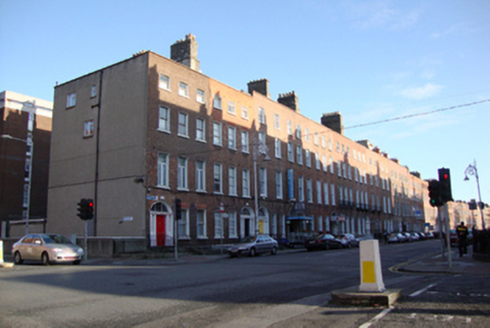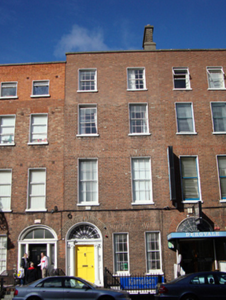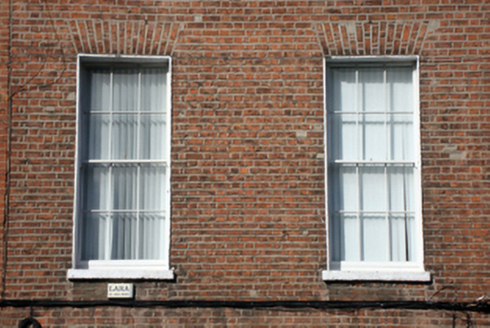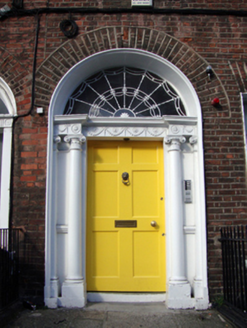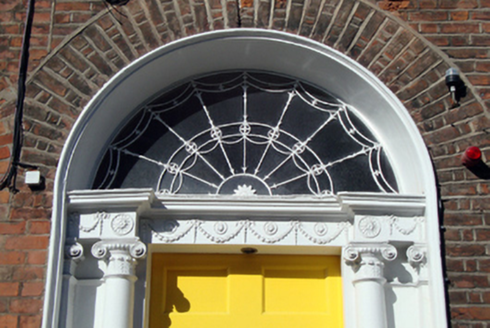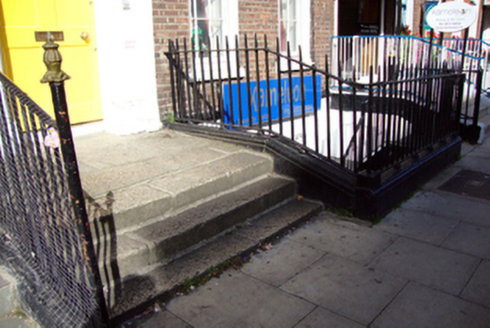Survey Data
Reg No
50010871
Rating
Regional
Categories of Special Interest
Architectural, Artistic
Original Use
House
In Use As
Apartment/flat (converted)
Date
1780 - 1800
Coordinates
315849, 235369
Date Recorded
10/10/2011
Date Updated
--/--/--
Description
Terraced four-storey house over raised basement, having three-bay ground floor and two-bay upper floors, built c.1790. Now in multiple occupancy. Single-span pitched roof hipped to south and gabled to north with brick chimneystack having terracotta pots shared on party wall with No. 4 to east behind granite-capped parapet wall. Red brick wall laid in Flemish bond, rebuilt to top floor, to painted masonry plinth course over rendered and painted basement wall. Rear wall gable ended and cement rendered, with mild steel fire escape. Gauged brick square-headed window openings with painted patent reveals and painted granite sills. Replacement timber sliding sash windows in six-over-six pane arrangement throughout, ground floor having paired narrower windows. Large replacement uPVC window in square-headed window opening at basement level. Two-over-two pane timber sliding sash windows to rear. Gauged brick round-headed recessed door opening with painted, moulded surround enclosing painted stone Ionic doorcase with engaged columns and responding pilasters supporting cornice lintel with paterae and swags supporting original cobweb fanlight, blocked and painted-over sidelights. Door opens onto granite platform and three granite steps bridging basement, flanked by original wrought-iron railings on low painted granite plinth enclosing basement area with matching gate accessing basement area. Original inset coal hole cover with carved drip groove, in granite kerb. Rear elevation extended and roof line altered at later date.
Appraisal
No. 3 is part of a terrace of red brick four-storey townhouses, forming part of one of the longest vistas in the city, and raised several courses above the buildings at either end of the block. The finely detailed doorcase, paired windows at ground floor level and higher than normal third floor windows add variety to this largely intact terrace. The retention of timber sash windows to both elevations enhances the architectural heritage quality of the building. Gardiner Place was developed by Luke Gardiner II in c.1790 as an extension of Gardiner's Row in order to link Rutland Square (Parnell Square) with the new and fashionable Mountjoy Square. Gardiner's legacy also included the laying out of Gardiner Row (1773), Mountjoy Square (1790), Gardiner Street (1792) and many other streets surrounding Mountjoy Square. Although built as a residential street, Gardiner Place was largely inhabited by legal professionals and doctors in the mid-nineteenth century, and as tenements, social housing and guest housing in the twentieth century.
